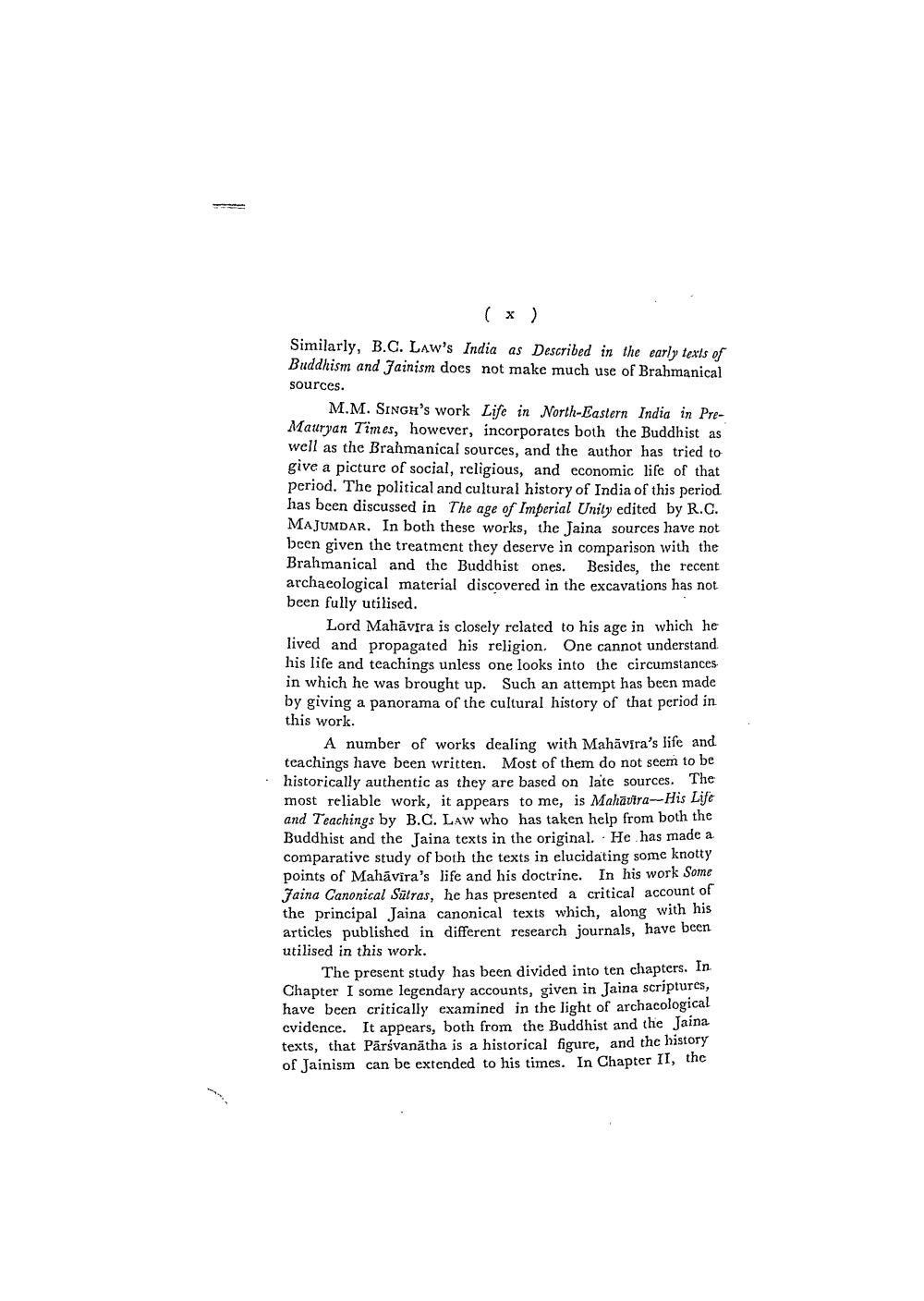________________
Similarly, B.C. LAW's India as Described in the early texts of Buddhism and Jainism does not make much use of Brahmanical sources.
M.M. SINGH's work Life in North-Eastern India in PreMatryan Times, however, incorporates both the Buddhist as well as the Brahmanical sources, and the author has tried to give a picture of social, religious, and economic life of that period. The political and cultural history of India of this period. has been discussed in the age of Imperial Unily edited by R.C. MAJUMDAR. In both these works, the Jaina sources have not been given the treatment they deserve in comparison with the Brahmanical and the Buddhist ones. Besides, the recent archaeological material discovered in the excavations has not been fully utilised.
Lord Mahāvīra is closely related to his age in which he lived and propagated his religion. One cannot understand his life and teachings unless one looks into the circumstances in which he was brought up. Such an attempt has been made by giving a panorama of the cultural history of that period in this work.
A number of works dealing with Mahāvira's life and teachings have been written. Most of them do not seem to be historically authentic as they are based on late sources. The most reliable work, it appears to me, is Mahavira-His Life and Teachings by B.C. Law who has taken help from both the Buddhist and the Jaina texts in the original. He has made a. comparative study of both the texts in elucidating some knotty points of Mahavira's life and his doctrine. In his work Some Faina Canonical Sutras, he has presented a critical account of the principal Jaina canonical texts which, along with his articles published in different research journals, have been utilised in this work.
The present study has been divided into ten chapters. In Chapter I some legendary accounts, given in Jaina scriptures, have been critically examined in the light of archacological cvidence. It appears, both from the Buddhist and the Jaina texts, that Pārsvanātha is a historical figure, and the history of Jainism can be extended to his times. In Chapter II, the




